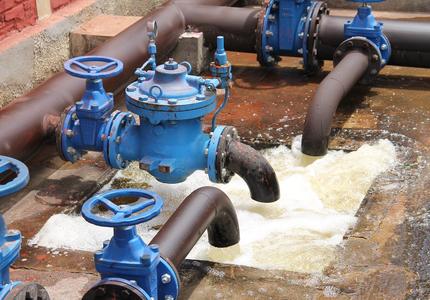
As part of its editorial project in the run-up to the June 2024 European elections, European States of Mind - Reinventing the Deal, IDDRI publishes (from November 2023 to March-April 2024) the ideas of European thinkers on what is shaping the political debates in the various Member States, on the project that the European Union should carry, and how the ecological transition fits in with the social and economic dimensions.
Marcin Korolec's blog post is the first paper of this series. The former Polish Environment Minister in the Donald Tusk Administration (2011-2013) advocates for a robust European strategy to compete with China and the US in the green industry, and hopes that this transformation program becomes a priority during the Polish Presidency of the European Union in 2025.
June 2024 marks the end of the term of the European Parliament and the European Commission. It is high time not only to take stock of the last five years of the European institutions' activities, but first to plan and prepare the agenda for their next term.
To realise Europe’s vision of a green industry, we need to make one critical decision: will we create our own and green version of "Buy American" or will we continue to let Chinese and American firms dominate the European market at the risk of jeopardising the future of the European social model?
Undoubtedly, the vision of Europe's climate neutrality and the enactment of the legislative package defining European climate policy until 2030, called "Fit for 55" in Brussels jargon, will remain for a long time, among the most important hallmarks of Ursula von der Layen's first term.
On December 11, 2019, announcing the College of Commissioners' decision to adopt the climate neutrality goal, the Commission President argued: "Our goal is to reconcile the economy with our planet, to reconcile the way we produce, the way we consume, with our planet, and to make it work for our citizens. The European Green Deal is about reducing emissions on the one hand, but on the other hand, creating jobs and stimulating innovation."
It must be said that the European Union has approached the realisation of the vision of climate neutrality, in its own way. The realisation of the policy goal "à l'européenne" is first and foremost the creation of a legal system to achieve it.
The legislative package setting the European Union on a path to a 55% reduction in emissions by 2030, a prelude to the next iterations of Europe's path to achieving climate neutrality by 2050, was undoubtedly one of the largest the European Union has ever adopted in its history. The Fit for 55 consists of six new pieces of legislation and 13 interrelated amendments to existing European climate and energy legislation.
But it worked. We have a legal system that will lead us to achieve a 55% reduction in emissions by 2030. Some of the regulations that have been introduced, such as the ban on the sale of combustion cars, beyond January 1, 2035, go beyond the 2030 horizon, but the "Fit for 55" package is just a stepping stone to enable Europe to achieve climate neutrality by 2050.
Now, we are beginning the next, perhaps more difficult stage, of putting these decisions into practice. And it will involve fundamentally changing the way we live, light, and heat our homes and workplaces, produce, move our goods or travel.
The vision of climate neutrality entails a scenario where our energy sector, transportation, heating systems in buildings, and industrial processes will not require the use of fossil fuels. Skeptics lament that this will not work, and that the European Union will send a tsunami of costs at us. Questions are raised about social costs and a "just transition," about "transportation exclusion." These are perfectly legitimate questions. And we need to find the right answers as soon as possible.
But we can look at the green transition with an economist's eye and conclude that the whole European Green Deal is nothing more than the creation of space for the generation of new economic activity in the future, and as a potential instrument for industrial expansion in the future. And today we should ask ourselves about whether we want this additional activity, which will be associated with the development of green technology and its industrial dissemination, to remain in Europe? After all, electric buses and cars, energy storage, heat pumps or photovoltaic panels will be produced somewhere.
Do we really want this future activity in Europe? After all, the Commission President argued, "The European Green Deal is our new growth strategy ...".
In introducing the regulatory package associated with the European Green Deal, its authors proceeded from the premise that, first, regulatory conditions should be created, and our industry will adapt to them. After all, it has always adapted, and the "invisible hand of the market" will guarantee that consumers get the best products and services at the best price. Except that in an era of very intense competition, especially from China and the US, this is an assumption, leading to the movement of entire industries outside the European market.
Never before, in such a short period of time, have we made such fundamental structural decisions, whether about the future of our societies or our European economy. But also, never before has the competition between the major economic blocs been so fierce. So, do we want to keep this new activity in Europe, or will we allow it to finance economic growth and new jobs in China and the US?
We should not let the history of the development of the photovoltaic panel industry repeat itself. It was not elsewhere but in Europe, in fact in Germany, back in the 1990s that the first photovoltaic panels began to be installed. It was German policy and the first European climate package, in 2007, that created a huge market for solar-generated energy in Europe. But as a result of massive state subsidies, the entire photovoltaic panel manufacturing industry has moved from both Europe and America to China. So, it can be said that thanks to European regulations aimed at developing zero-carbon energy sources and thanks to the spending of European consumers, we have created hundreds of thousands of jobs in China and hundreds of billions in income for the Middle Kingdom's economy. But after all, China's subsidisation of new, especially green technologies is happening today on a much larger scale than in the past.
In the United States, it was the response to unfair Chinese trade practices that was one of the reasons the Biden Administration introduced a regulatory package called the Inflation Reduction Act (IRA) last summer.
Throughout Donald Trump's presidency, the US has lagged behind Europe in the fight against climate change, but in passing the Inflation Reduction Act, they did things the right way. Instead of fiddling with the laborious process of passing detailed legislation forcing businesses to act to protect the climate, they concluded that instead of the "stick method," the "carrot method" was better, and introduced a multi-billion-dollar incentive system to spread green technologies.
Signing, on August 16, 2022, the Inflation Reduction Act, President Joe Biden said:
"The Inflation Reduction Act invests $369 billion to take the most aggressive action in history (...) to address the climate crisis and strengthen our economic and energy security. It will offer working families thousands of dollars in savings, providing rebates for the purchase of new and efficient appliances, upgrades to their homes, tax credits for the purchase of heat pumps and rooftop solar systems, electric stoves, ovens, dryers. It gives consumers a tax credit for buying electric or fuel cell vehicles, new or used. It also gives them a credit–a tax credit of up to $7,500 if the vehicles were made in America. American car companies, along with American labor, are committing their treasure and their talent–billions of dollars of investment–to producing electric vehicles, batteries and electric charging stations across America, made in America. All made in America. This new law also provides tax credits that will create tens of thousands of well-paying jobs and jobs in clean energy production, solar power factories in the Midwest and South, wind farms on the plains and off our coasts, clean hydrogen projects and more–all over America, in every part of America. This bill is the biggest step forward on climate–ever–and will allow us to (...) boldly take additional steps toward achieving all of my climate goals–the ones we set when we started. This includes ensuring that we create clean energy opportunities in front-line and fence-line communities that have been strangled–strangled by a legacy of pollution and are fighting the environmental injustices that have been going on for so long."
President Joe Biden's speech quoted above contains the entire logic of the IRA. He pledges nearly $370 billion in support for specific technologies whose diffusion will reduce greenhouse gas emissions. However, the condition for benefiting from the US government's assistance is that the production of electric cars, heat pumps, etc. takes place in America. The US Administration made sure that the additional activity and modern jobs resulting from the development of new green technologies would remain in the US. This provision was aimed directly at China, due to the huge state subsidies for green technology in China.
The IRA in its simplicity works in that the entrepreneur is entitled to a government subsidy, the amount of which depends directly on the amount of greenhouse gas reduction that results from the electric cars, heat pumps or other green technologies they produce. By creating a system that is both generous and simple in its operation, the Americans have created the world's friendliest system for the introduction and development of low-carbon industry.
With the enactment of the IRA, America became once again the promised land for all the most innovative companies from around the world, including Europe. In addition, the introduction of the Inflation Reduction Act effectively halted the expansion of Chinese low-carbon technology exports to the US. Unable to find a market for their products, Chinese companies changed course and began to conquer the European market even more aggressively.
Initially, the passage of the Inflation Reduction Act in the US remained almost unnoticed in Europe. It was not until the autumn of 2022 that voices were heard in European decision-making circles about the need to formulate an adequate European response.
After several months of discussion, on March 16, 2023, the European Commission presented a draft Net Zero Industry Act as a European response to the IRA. In simpler terms, the Commission proposed that Member States loosen state aid rules, introduce simplified procedures related to the environmental decision-making process, for investments aimed at climate protection, in particular wind power investments, and allocate some billion euros not used in other European programs.
Despite the generally positive reception by some European commentators, the Net Zero Industry Act is far from being sufficient to retain and attract the best green technology innovators to Europe. It will not represent an obstacle to the expansion of Chinese exports of electric cars to Europe, nor will it create a sufficient foundation to build the dominance of European technologies in the world, especially in competition with American or Chinese technologies, which are developing as if on steroids.
The European investment envisioned to back the Net Zero Industry Act–a few billion euros in unused funds elsewhere–seems rather modest in the face of the 369 billion pledged by the Biden Administration and the secretive but generous subsidy system enacted by the Chinese government.
The loosening of state aid rules is certainly not a good substitute for a joint European investment. Not only is the scale of accumulated French-German resources insufficient to create a counterweight to the financial firepower of the US or China but a Europe of loosened state aid rules is a Europe organised under the slogan "Sauve qui peut!". This is the very negation of the idea of the Europe of Jean Monnet, Robert Schumann, Konrad Adenauer or Alcide De Gasperi.
What does such a deal offer for the governments of countries whose state coffers are unable to set aside any funds to help their own entrepreneurs? What about the entrepreneurs of Italy, Bulgaria, or Poland, which are likely to be subject to the excessive deficit procedure soon?
Worse, liberalising environmental approval procedures in the name of climate protection is not a credible way forward at a time when Europe is failing on many of its environmental objectives, not just in terms of greenhouse gases.
So, what should be our European response? Are we able to simultaneously protect the climate by promoting the products of green industry and ensure that Europe is the place where we develop green industries and defend European jobs?
I am convinced that we can take on the challenge of competition from both the US and Chinese sides. The condition for this, however, is to adopt a truly European way of thinking. The condition is to create our common response, the financial dimension of which should not be less than the US Inflation Reduction Act. We should use the experience we gained in enacting the financial arm of the fight against the economic crisis caused by the COVID-19 pandemic, the NextGenerationEU. Back then, we were able to outline the scale of the necessary measures and make the necessary decisions in just a few months.
I hope that the President of the new European Commission, as one of its first actions, will propose NextGenerationEU2.0 to Europe. This time to protect the European economy from being flooded with subsidised exports of green American or Chinese technologies. NextGenerationEU2.0 would consist in issuing a common European debt, which would be the basis for creating a fund that would be able to finance the development of green technology production, in particular, cars, electric buses, heat pumps or photovoltaic panels in Europe.
This new support for European industry should be structured to be as simple as possible for entrepreneurs. Devoid of discretionary criteria, it should operate in an automated manner. It will also not do without violating the taboo operating in Europe and allowing state aid not only for investment purposes, but also for operational purposes. Based on the assumption that the newly-created fund would be aimed at developing new green industries, protecting jobs, and combating climate change, the condition for receiving aid would be to invest in production capacity and create jobs in Europe in specific industries. Copying the solutions of our American partners, let's create a "Buy Green and European" program.
We still have a while to discuss the size and modus operandi of this fund, the distribution of funds among Member States and the type of technologies we would like to support. But if we do nothing then we will meet our climate goals by buying American or Chinese electric cars, heat pumps or photovoltaic panels.
The European Green Deal should not become a rip off: Let’s not create a false dilemma between the protection of European jobs and the European social model that depends on it, and the protection of the climate. If we box ourselves in that corner, we could be facing much more serious, fundamental questions about the European social model, about democracy in Europe, or ultimately about the future of the European Union as we know it.
Let us hope instead that the creation of such a green transformation program will become one of the priorities of the Polish Presidency of the European Union, in the first half of 2025.




